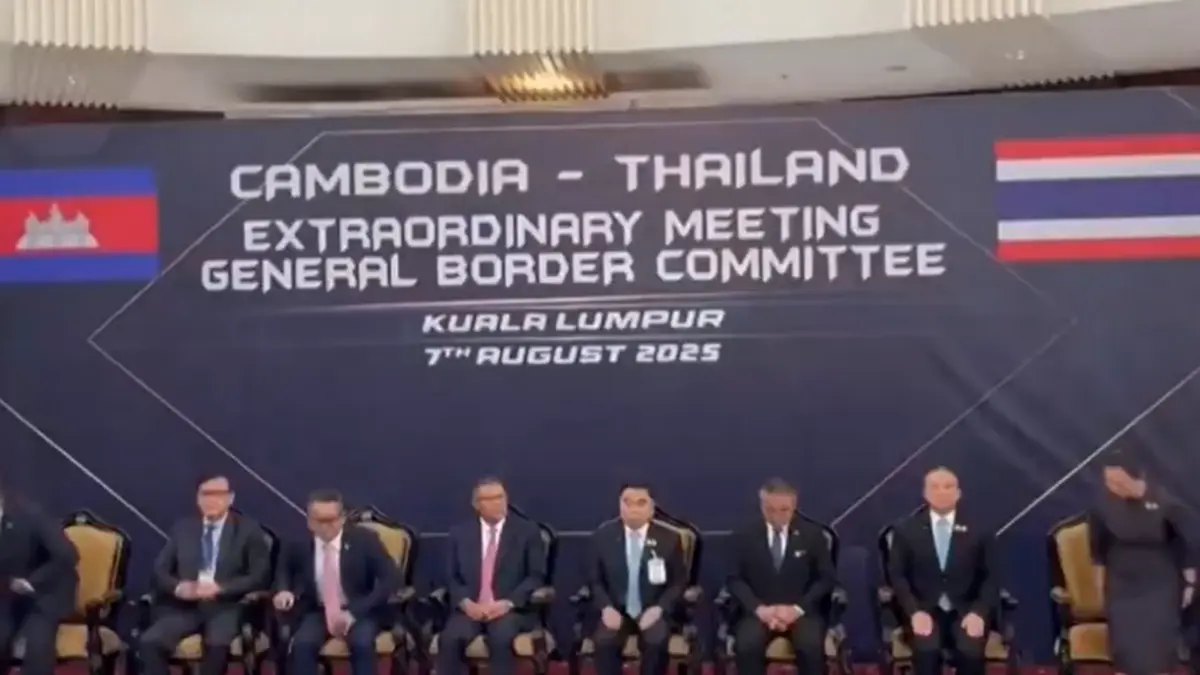“(Bangkok – August 8, 2025) – Cambodia and Thailand have reached an agreement to allow observers from the Association of Southeast Asian Nations (ASEAN) to monitor a recently renewed ceasefire along their disputed border. The agreement, announced after talks between senior officials, is a rare step towards easing tensions after weeks of sporadic clashes near the Preah Vihear temple area.
The ceasefire, which both sides agreed to extend, comes with a point of contention: 18 Cambodian soldiers remain in Thai custody, detained just hours after the original ceasefire went into effect. Phnom Penh has demanded their immediate release, calling their detention a violation of the agreement, while Bangkok says they were captured for entering Thai territory in violation of military orders.
Terms of the monitoring mission
Under the new arrangement, to provide independent reporting on compliance with the ceasefire ASEAN observers will be deployed at key flashpoints along the border. The monitoring team will operate under a jointly agreed mandate, with both militaries commanding their own forces. This will be the first time ASEAN has deployed such a mission to monitor a ceasefire. It signals a deeper regional role in conflict resolution between its two members.
The monitors are expected to include military officers and civilian experts from several ASEAN states. Their tasks will include patrolling, investigating incidents and liaising with field commanders on both sides to prevent minor disputes from escalating.
Diplomatic calculation
For Cambodia, ASEAN involvement is seen as a means of adding international monitoring to a volatile and politically charged dispute. Prime Minister Hun Sen’s government has sought to position the monitors as a guarantee of transparency and a safeguard against unilateral military action.
Thailand’s agreement with the mission – despite local nationalist pressure – suggests a desire to prevent further clashes that could escalate into civil war. Regional could damage the status quo or disrupt trade in border provinces. However, Bangkok’s continued detention of Cambodian troops could serve as a bargaining chip in future negotiations.
Strategic Importance
Cambodia-Thailand border tensions have simmered for decades, periodically flaring up in armed exchanges, despite a 1962 ruling by the International Court of Justice awarding the Preah Vihear temple to Cambodia. The surrounding territory remains disputed, with both militaries building fortifications in the area for years.
If the ASEAN monitoring mission is successful, it could serve as a model for resolving similar disputes within the bloc, reinforcing ASEAN’s principle of “regional solutions to regional problems.” However, its effectiveness will depend on the monitors’ ability to operate with sufficient independence and the willingness of both governments to accept and act on their findings.
Next steps
Detainees No timetable has been announced for the release of the Cambodian soldiers, although diplomats from several ASEAN member states have offered to mediate. The monitors are expected to be deployed within weeks, with initial teams conducting on-site assessments before full operations begin.
The coming weeks will be critical in determining whether the ceasefire can remain under monitoring. Any renewed hostilities could undermine ASEAN’s credibility in conflict resolution and set back years of cautious progress towards a lasting settlement.
The ASEAN Security Council will continue to monitor developments in the deployment of the ceasefire monitors and the status of the detained Cambodian soldiers.“
Read Also: Swiss Politicians Urge Scrapping F-35 Deal After U.S. Slaps Tariffs on Swiss Exports
FAQs
The two countries agreed because there were concerns that recent clashes near the Preah Vihear temple area could escalate into a larger conflict. By allowing ASEAN observers, they hope to build trust, avoid future violence, and show the world that the region can deal with disputes through cooperation rather than war.
ASEAN observers will patrol disputed areas, investigate ceasefire violations, and report incidents fairly. They will also speak to military commanders on both sides to prevent minor disputes from escalating into major conflicts. This is the first time ASEAN has sent a team to monitor a ceasefire between its own members.
If peace prevails, local traders and families living near the Cambodia-Thailand border will be able to feel secure and continue to trade across the border without fear. Stable relations will also support regional tourism, agriculture, and small businesses that were affected during the conflict.
Yes, many experts believe so. If the Cambodia-Thailand monitoring works well, it could inspire ASEAN to take similar steps in other conflicts, such as the South China Sea disputes. It will strengthen ASEAN’s role as a regional peacekeeper and build trust among its members.








Leave a Reply